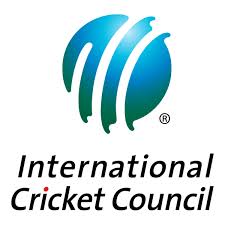ICC Set to Introduce Major ODI and Test Rule Changes: Reverse Swing Revival & Time Clock in Focus

: ICC Eyes Big Rule Shake-Up in ODIs and Tests
Cricket could soon witness a fresh wave of changes as the International Cricket Council (ICC) considers several new rules aimed at balancing the game between bat and ball. Key updates include the removal of the second new ball in ODIs, the introduction of time clocks in Test matches, and a potential T20 format for the Under-19 World Cup.
: One Ball Rule May Return in ODIs to Revive Reverse Swing
According to a report, the ICC Cricket Committee, led by Sourav Ganguly, is set to recommend phasing out the use of two new balls in One Day Internationals (ODIs).
: Why the Two-Ball Rule Is Being Reconsidered
Currently, ODIs start with two brand-new white balls, each used from either end.
This setup has reduced the chances of reverse swing, a skillful bowling technique that relies on ball aging.
With both balls staying relatively new, fast bowlers have struggled to get late movement, especially in the death overs.
: Proposed New Ball Rule for ODIs
Teams would begin with two fresh balls, but after the 25-over mark, only one ball can be used.
The bowling side would choose which of the two balls to continue with.
This move is aimed at bringing back reverse swing and leveling the playing field for bowlers.
: Cricket Legends Support Rule Change
Cricketing greats have long voiced concerns over the current format:
Sachin Tendulkar once called the two-ball rule a “prescription for disaster”.
He emphasized the lack of reverse swing and how modern ODIs overly favor batters.
Brett Lee also backed Tendulkar’s viewpoint, urging the ICC to restore bat-ball balance.
With the proposed rule, the ball could age up to 37-38 overs, unlike the current 25-over lifespan. This would enhance the chances for seamers to use reverse swing effectively in the final overs.
: Time Clock in Test Matches to Control Slow Over Rates
: Test Cricket to Get More Structured with Time Clocks
Another rule under discussion is the implementation of in-game clocks in Test matches, similar to those used in white-ball formats. Here’s what it means:
- A maximum of 60 seconds would be allowed between overs.
- This aims to ensure that 90 overs are completed in a single day.
- It addresses a long-standing issue of slow over rates that often reduce the excitement of red-ball cricket.
- This change could also improve viewership experience by reducing unnecessary delays during matches.
: Under-19 Men’s World Cup May Shift to T20 Format
The ICC is also weighing the idea of converting the Men’s Under-19 Cricket World Cup to the T20 format, it with the Women’s Under-19 World Cup, which has already adopted this format in both the 2023 and 2025 editions.
: Why the T20 Shift Is Being Considered
The shorter format is more dynamic and viewer-friendly.
It aligns with the global popularity of T20 cricket, especially among younger audiences.
However, some experts argue that the 50-over format offers better preparation for senior-level cricket.
Any changes to the Under-19 World Cup format would likely be implemented starting in 2028,
Conclusion: Cricket’s Evolution Continues
With these proposed changes, the ICC aims to:
- Restore balance between bat and ball in ODIs
- Improve the pace and structure of Test matches
- Modernize youth cricket with T20-friendly formats
Fans and players alike will be watching closely as the ICC deliberates during its ongoing sessions in Zimbabwe.